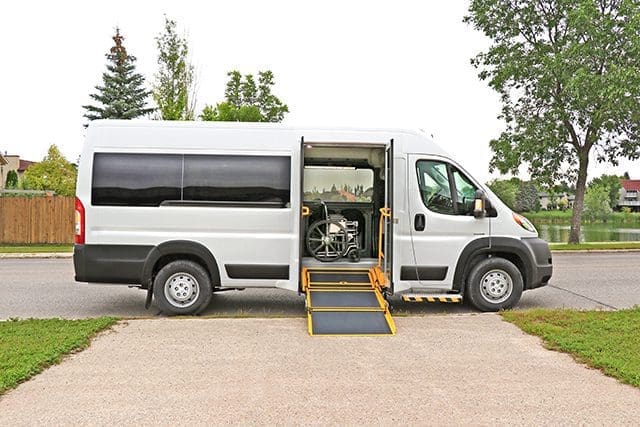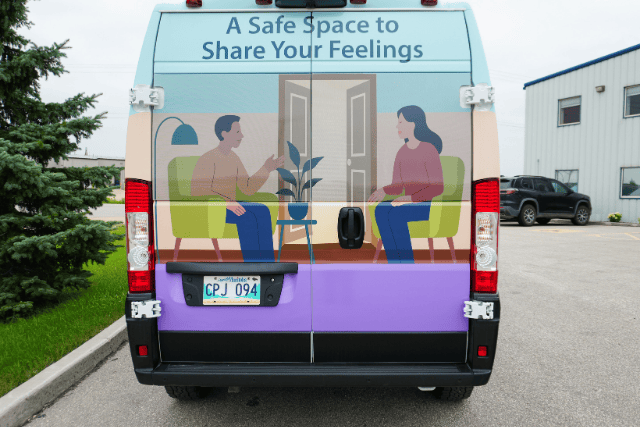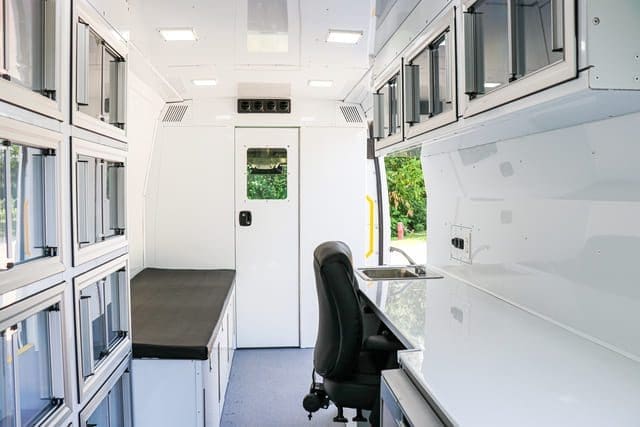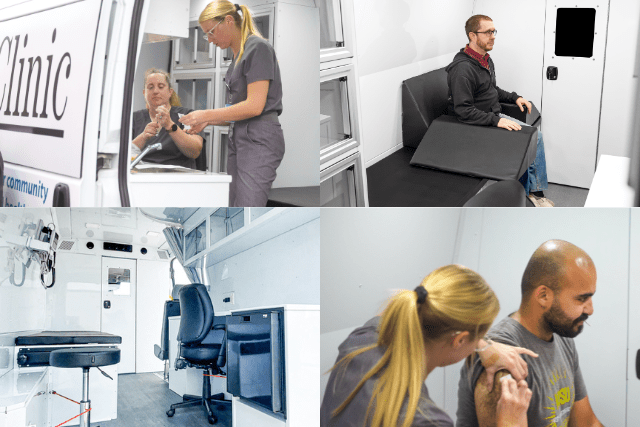How do you know if on-demand transit or fixed-route transit is right for you and your clients? That’s probably what you’re wondering right now. And honestly, it’s a big decision. Choosing the wrong system can waste your funding, frustrate riders, and cause real headaches for your staff. According to Statistics Canada, more than 6 million Canadians live in rural or remote areas. Many of those folks still struggle to access safe, reliable transit.
Your organization wants to help. But fixed-route might be too rigid. On-demand sounds flexible, but is it harder to manage?
It doesn’t have to be so confusing. You just need the right information to make a smart choice. That’s what this article will give you.
We’ve helped communities like yours for over 20 years. At MoveMobility, we’re trusted by healthcare networks, governments, and non-profits across Canada. We build barrier-breaking vehicles that meet real needs, especially in rural and underserved areas.
We’re not here to pitch you. We’re here to help you decide what’s best for your riders, staff, and budget.
In this article, you’ll learn:
- The biggest differences between on-demand transit and fixed-route transit
- Pros and cons of each
- How to decide what’s right for your community
Let’s dive into the details and help you close that gap.
What are the differences between on-demand transit and fixed-route transit?
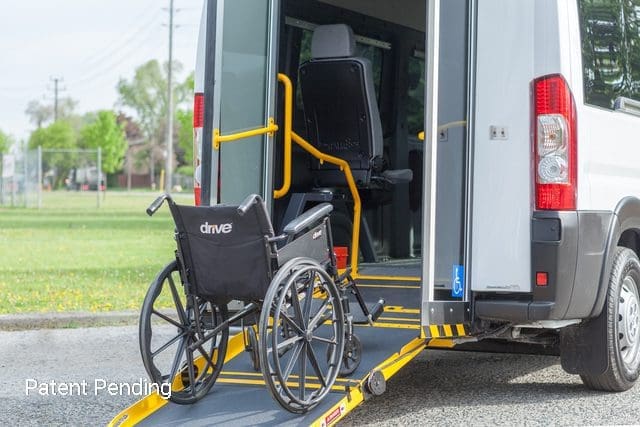
Let’s say you need a ride across town.
With fixed-route transit, it’s like catching a school bus. The bus stops at the same places, at the same times, every day. You walk to the nearest stop, wait for the bus, and it takes you where it’s already going, whether it’s full or empty.
With on-demand transit, it’s more like calling a ride from a friend. You tell the system where you are and where you want to go. A van or bus comes to get you and takes you straight there, or close to it. It only goes where riders need to go, not on a set path.
Let’s break it down:
Fixed-route transit:
- Set schedule: Buses run at certain times, no matter how many people are riding
- Set path: Always follows the same roads and stops
- Walk required: Riders must get to a bus stop, even if it’s far away
- Better for cities: Works best in busy places where many people ride together
On-demand transit:
- Flexible timing: Riders book trips when they need them
- Flexible route: Vehicles change paths depending on where riders are
- Door-to-door or close: Often picks you up and drops you off nearby
- Great for rural areas: Helps people who live far from regular bus stops
Let’s say Bob lives in a small town 10 minutes from the nearest bus stop. With a fixed-route system, Bob would have to walk or drive to the stop even in bad weather. But with on-demand transit for rural communities, Bob can book a ride from his driveway to the clinic downtown. Way more manageable, right?
So in short, fixed-route is all about staying on schedule and path. On-demand is all about going where people actually need to go.
What are the pros and cons of on-demand transit?
On-demand transit is growing fast, especially in places where buses don’t always make sense. But just like anything, it comes with ups and downs.
Pros of on-demand transit
1. More flexible for riders
People can book a ride when they need it, not just when the bus shows up. This works great for folks with busy schedules or unpredictable days.
2. Better for spread-out areas
On-demand transit works well in rural or suburban areas. Instead of sending big empty buses down long roads, smaller vehicles like wheelchair accessible vans can pick people up right from home.
3. Can reduce wait times
In some areas, riders get picked up faster because the system only sends vehicles where they’re needed.
4. More accessible
Many systems offer wheelchair accessible vehicles so people with mobility challenges can ride with ease.
5. Easier to try new routes
Cities can test out on-demand transit in new neighborhoods without building full bus stops.
Trying to decide on the right wheelchair van size? Check out the video velow
Cons of on-demand transit
1. Technology is required
Most on-demand transit systems require riders to book rides through an app or website, which can be challenging for people without smartphones or the internet.
2. Costs can vary
Running a flexible system with smaller vehicles might cost more per rider, depending on the area.
3. Harder to predict
Riders might not know exactly when they’ll be picked up, especially during busy times.
4. Limited service areas
Some on-demand transit services only cover certain zones or hours, unlike full-day fixed routes.
While transit on demand is super helpful for flexibility and coverage, it may not be the perfect fit for every community. It really depends on who’s riding and where they’re going.
Pros and cons of fixed-route transit
Most people think of fixed-route transit when they picture public transportation. Buses, trains, or vans follow the same path every day, stopping at set locations on a set schedule. It’s common in cities big and small. Let’s look at its pros and cons.
Pros of fixed-route transit
1. Easy to understand
Fixed schedules and routes make it simple to plan your trip. Riders know when the bus will come and where it will stop.
2. Great for busy areas
In places with a lot of riders, like downtown Edmonton or Calgary, fixed-route transit keeps people moving quickly and efficiently.
3. Cheaper to operate at scale
Once routes are set and running regularly, the rider cost can decrease, especially when buses are full.
4. Works without tech
You don’t need a smartphone to use it. Just walk to a stop, read the sign, and hop on. It’s great for folks who aren’t comfortable with apps or online booking.
5. Easy to add features
Fixed routes often include wheelchair accessible vans or buses, making them helpful for riders with mobility needs.
Cons of fixed-route transit
1. Inflexible
A bus on a fixed route typically won’t leave that route, even if no one’s waiting. That can mean wasted fuel and time in low-use areas.
2. Long waits in some spots
If people miss their ride, they might be stuck waiting a long time for the next one.
3. Doesn’t reach every corner
People who live in rural or spread-out areas might not have a stop nearby. This is where on-demand transit can help fill the gap.
4. It can feel confusing in big systems
Too many lines, stops, or schedules can overwhelm new riders.
Fixed-route transit works great in busy places with lots of riders, but it’s not always the best fit for every neighborhood. That’s why more cities are now mixing fixed routes with transit on demand services, like on-demand transit Edmonton to meet more needs.
How do you decide which one is right for your target communities?
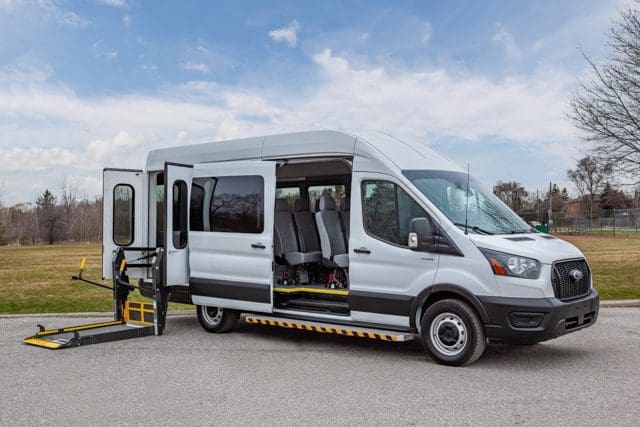
When it comes to choosing between on-demand transit and fixed-route transit, there’s no one-size-fits-all answer. What works in one place might not work in another. The key is to look closely at your community’s needs, layout, and who’s using the service.
Here are some things you need to think about:
1. Population size and layout
In a large city like Vancouver, fixed-route transit makes sense downtown. People are always coming and going, so buses can run full and on time. But in the suburbs or smaller towns, like some areas outside Edmonton, there aren’t as many riders. That’s where Calgary transit on demand or on-demand transit Edmonton models can help. They pick people up only when needed, which saves money and makes better use of vehicles.
2. Rider needs
Think about who uses the service.
- Are they seniors?
- People with disabilities?
- Kids going to school?
Some folks may find it hard to get to a set stop. In those cases, transit on demand using wheelchair accessible vans might be the better choice.
3. Budget and resources
Fixed-route transit needs more vehicles and drivers to keep everything on schedule. On-demand transit can use fewer vehicles, which may cut costs. But it also needs booking software and dispatch staff.
4. Travel habits
Are people going to the same place every day, like a job site or school? Then, a fixed route could work well. But if trips are all over the map, on-demand transit gives more flexibility.
5. Community engagement and feedback
Before making a choice, do some market research and talk to the people who will use the service. You can send out surveys, hold town halls, or even ride along on current transit routes.
Ask questions like:
- How do you get around right now?
- What stops you from using public transit?
- Would you be comfortable using an app to book a ride?
Reliable Wi-Fi or smartphone access might be limited in rural Alberta or northern Indigenous communities. That could make on-demand transit harder to use unless there’s a phone booking option.
6. Accessibility
Accessibility goes way beyond ramps. Ask yourself:
- Can someone using a wheelchair safely get in and out?
- Are the vehicles equipped for walkers or oxygen tanks?
- Are your drivers trained to assist people with different mobility needs?
With wheelchair accessible vans, both on-demand transit and fixed-route transit can be made more inclusive. But it’s easier to plan for accessibility when you’re building flexibility into the system, like you do with transit on demand.
7. Weather and road conditions
Let’s be real: Canada isn’t exactly known for smooth roads and sunny weather year-round. Snow, ice, and gravel roads can throw off fixed-route schedules. On-demand transit, especially using vans, can adapt faster by avoiding blocked roads or picking up riders from safer locations. You can also upgrade your vehicle with a Trail Edition package for added safety in tough conditions.
Choosing the right model means understanding how your riders move and what helps them move best. The right fit leads to better service and better use of resources.
Got any questions about on-demand or fixed-route transit?
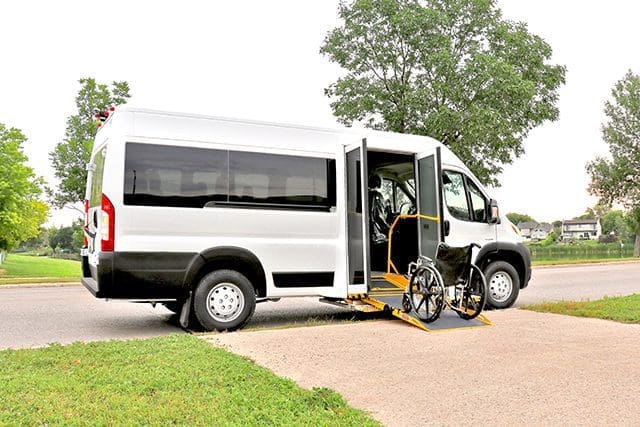
You came to this article because you’re trying to solve a real problem. Maybe your current transit system isn’t working anymore. Or perhaps you’re not sure if on-demand transit would work better than fixed-route transit. Either way, you want a better solution for the people you serve.
Here’s what you learned today:
- What each system is and how fixed-route transit compares to transit on demand
- The pros and cons of both options
- What to think about when choosing the right option for your riders and your region
At MoveMobility, we design vehicles that help solve real problems for Canadian communities. We’ve worked with cities and non-profits across the country to launch smart, accessible transit programs. We understand your challenges and build vehicles that help you serve every rider with dignity and care.
We do this because we believe transportation should never be a barrier. It should be a bridge. If you’re ready to explore what that could look like in your community, click the button below to talk to a mobility expert.
Not ready to talk just yet? No problem. We’ve got other helpful resources to help you learn more at your own pace.
Start by checking out our article on the Ford Transit wheelchair vans. This may help if your organization is considering options for transit services.
Another helpful article is about wheelchair van customization. It can help steer you in the right direction when you start to think about customization requirements.


